Mortality is a fabric more important than money, politics, and belief systems. We all share the same responsibility of health; the only variable is the time in our life we acknowledge it.
Rare/undiagnosed consumer behavior is the most intense example of participatory responsibility.
When patients and caregivers are diagnosed with severe rare conditions or seek a diagnosis for debilitating symptoms, they very quickly decipher what they can and cannot control. This advanced behavior allows rare/undiagnosed consumers to activate their wholly aligned intentions and abundant time. The primary and most helpful use of this energy is data aggregation.
Something very special happened last week: At 5 am on Wednesday at Newark International Airport, I was eager to fly to San Francisco to attend an Advanced Research Project meeting as part of Health and Human Services (HHS). The Thursday meeting was for a curated collection of 150 leading experts in Artificial Intelligence (AI), Genomics, Informatics, Data Science, Health Data Interoperability and Rare Disease Research to help expedite the diagnostic odyssey through leveraging AI.
Shortly after landing, I received news about the executive memo instituting a “freeze” for travel and external communications for the HHS. Stepping off a 6-hour flight, my brain was working to process this news. The bizarre and frustrating helplessness reminded me of many unfavorable diagnosis moments I’ve experienced with my sons.
My 5-year-old was born with ultra-rare Diamond Blackfan Anemia; treatments include steroids, blood transfusions and bone marrow transplant. He is also autistic. My 3-year-old was born with VACTRL association. He now has unexplained profound deafness and neurological tumors. These “Oh-No! moments” have sharpened my processing ability to accept the environment I cannot change and understand choices I have.
After my second son was born with a different rare diagnosis, but subjected to the same antiquated use of data and technology tools, I realized the power of my perspective to help improve healthcare. I put my career as digital product UX designer on hold indefinitely and spent the next two and half years traveling and meeting ecosystem leaders.
We are on the cusp of a new paradigm in medicine. Advanced consumer behavior, national policy and AI capability present a new environment for us to leverage 60 Zetabytes of collective health data.
Thursday’s Advanced Research Project meeting marks a critical focus on the heightened participatory behavior of rare disease communities. Consumers of undiagnosed and rare chronic congenital genetic diseases know their diagnoses are underfunded and underserved. As consumers with wholly aligned and abundant time to devote toward positive outcomes, they deploy their energy to help providers and researchers in any way they can. This consumer energy is the gateway for AI tools to leverage massive health data sets for more effective diagnosing, treatment and discovery.
Making sure all health data is accounted for and harmonized into a linear data set, is critical for rare/undiagnosed consumers. With access to complete data sets, providers have comprehensive details to help optimize effective diagnoses and treatments, but do they have time to analyze them?
AI is an extraordinary data processing solution to limited human bandwidth.
If fed comprehensive linear health data sets, AI can help achieve accurate diagnoses. It is important to realize consumers have the sole responsibility to aggregate these data sets. With the help of “data-access-rights” mandates from the 21st Century Cures Act and interoperability data standards of HL7®FHIR®, for the first time consumers have the technology and policy to fulfill this responsibility.
Thursday’s fortuitous gathering was a result of exceptional ability and altruism of the Advanced Research Project invitees to capitalize on the opportunity to affect change. Eighty-five of the original 150 attendees, who already traveled to San Francisco did not squander the opportunity. These leaders put aside individual agendas for a higher purpose. The impromptu open discussion had a clear consumer focus. With a shared sense of humanity the unanimous consensus was that for real innovation to happen we must partner for the righteous benefit of the consumer.
UC San Francisco was gracious enough to provide a venue. Rare disease pioneers in genomics, AI, data aggregation and research from Stamford, U of Chicago, U of Michigan, Harvard, UC Irvine, Global Genes, NORD, Citizen Health, CZI, N1 Collaboration, Sage Bionetworks, Truveta, Across Healthcare, IQVIA, TISLab, OPTUM, ADA, Genial, Netrias and others collaborated freely.
People continually tell me how harrowing it is to be a parent to severely ill children. Beside reminding them we are all on the same journey, I let them know about my euphoric sense of purpose as I try to improve the lives of humanity as much as anyone has in history. The energy and emotion of this January 2025 meeting in San Francisco produced a landmark moment of agreement and action.
If not us, then who?
Cummings is a digital product UX. After the birth of his two sons, both with rare diseases, he focused his energy on healthcare modernization.

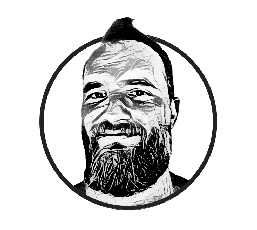
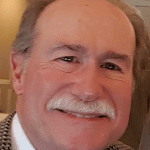
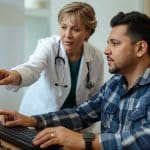

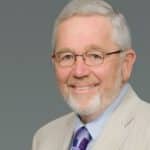
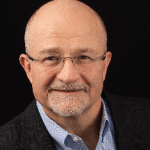
Great post, James. Thanks for all the work you are doing!
Well done, James et. al.
I’m honored to be featured on the SPM blog. Some commentary about me:
After having two young boys with different rare diseases—Diamond Blackfan Anemia (5–7 cases per million live births) and VACTRL association (1 in 10,000 to 40,000 live births)—I’ve seen firsthand how less than 1% of health data is ever tagged or analyzed.
Patient and caregiver (consumer) participation in healthcare outcomes is rapidly increasing. Despite having no formal medical education or experience, consumers play a critical role in unlocking access to vast amounts of previously incalculable and unshareable health data. Aggregating complete, linear health data sets is a responsibility that falls solely on consumers.
When provided with comprehensive data, both consumers and providers can harness AI’s power to analyze massive health datasets, leading to more effective diagnoses, treatments, and discoveries.
We are heading toward this inevitable future! Over the past two and a half years, I’ve traveled extensively, meeting with leaders in health policy, interoperability standards, health IT, AI, and research to accelerate this transformation.
This is real an amazing post, James!
You really touch on the opportunities that have opened with AI, making us, the caregivers, the drivers of change In the world of rare diseases. I suspect that, just as happened 3 decades ago with the emergence of online communities driving organizations and scientific discoveries, AI will Do the same, just faster.
James, thank you for staying in the fight for health data rights and a future that is designed WITH patients, survivors, and caregivers (not for them). It’s wonderful that the group was able to pivot and still hold what sounds like an awesome “unconference.” Classic Rebel Health behavior — finding a way to solve problems in creative ways, together.